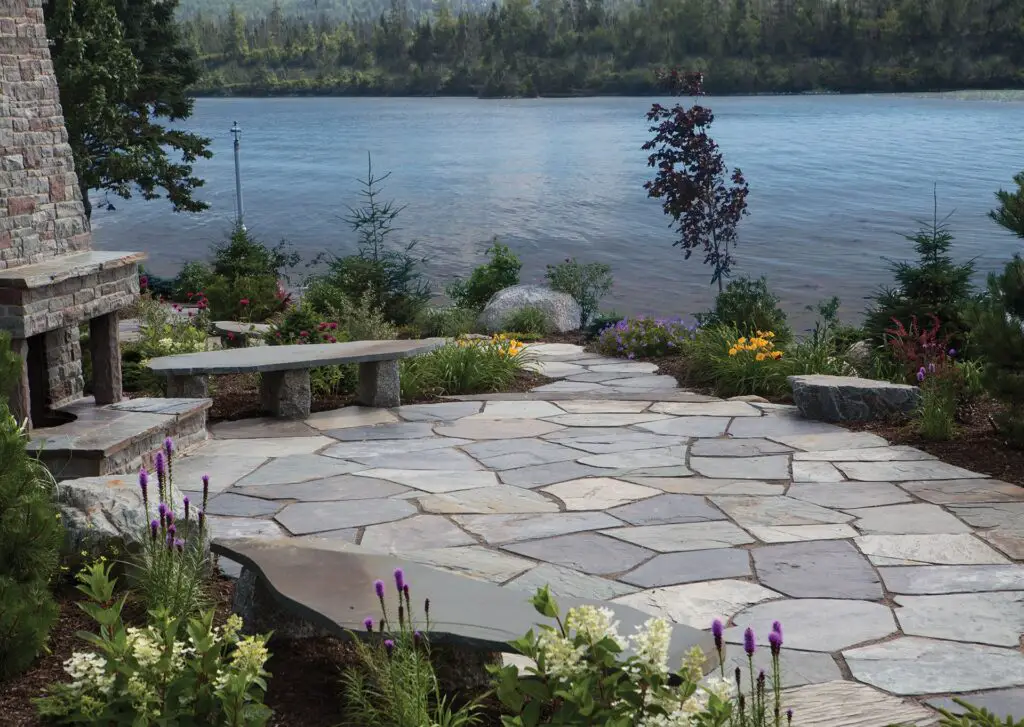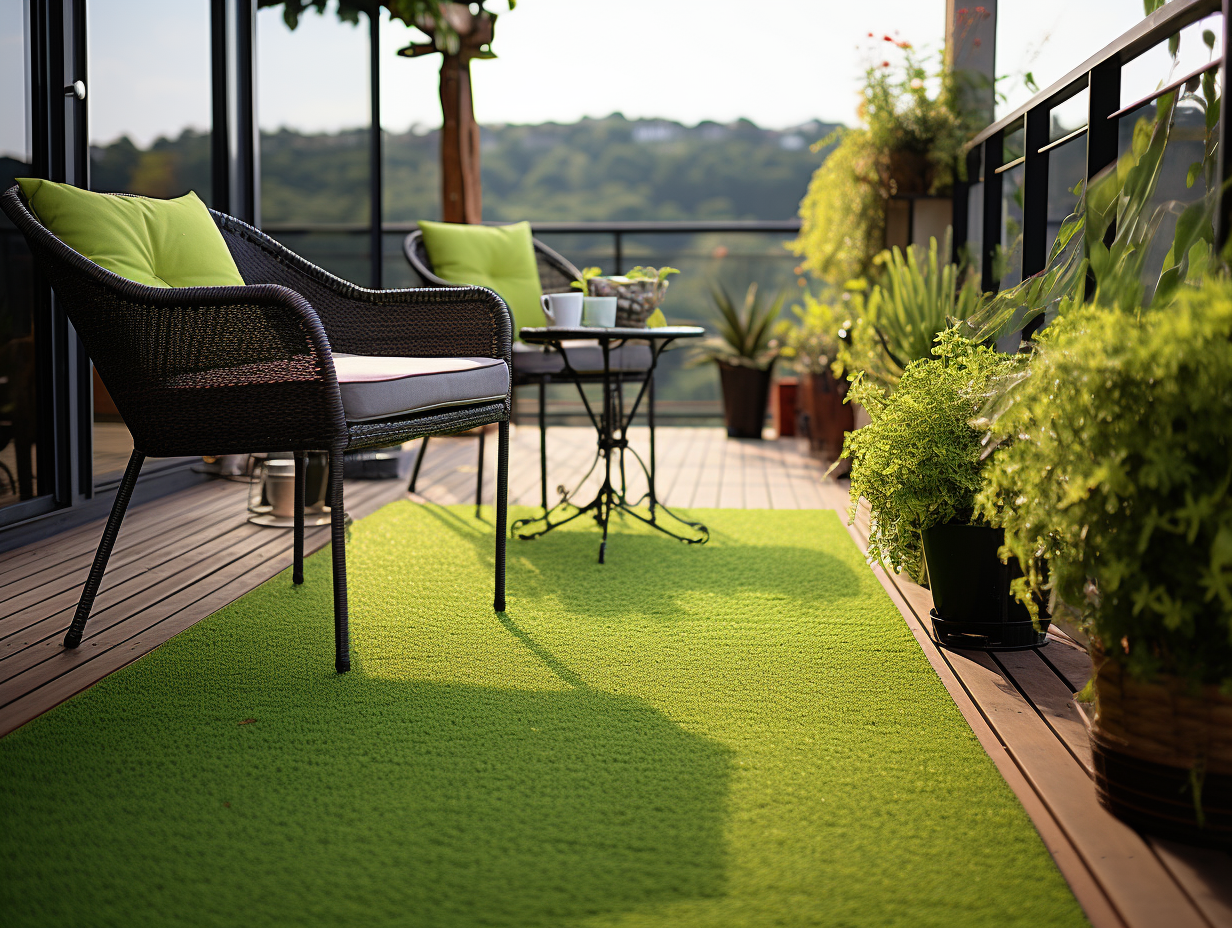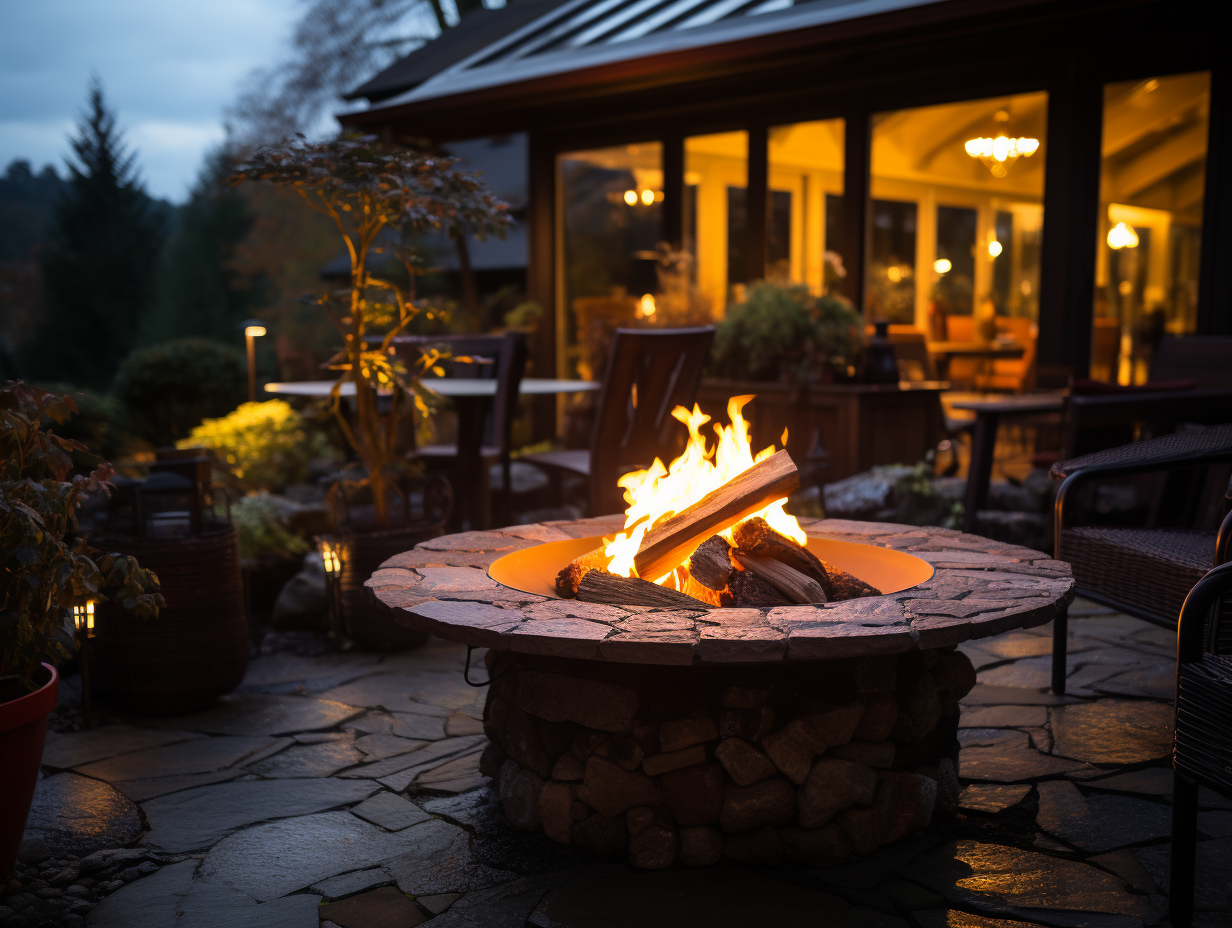
If you want to take your outdoor living space up a notch by adding some interest to your plain old patio stones via paint then go right ahead and give it a shot.
Painting your patio stones and pavers has become a great way to brighten and decorate your patio from the old fashion look.
Here are some tips on how to paint your patio stones and pavers and what you need.
Can You Paint Patio Stones And Pavers
Yes, it is possible to paint patio stones and pavers with the right preparation and technique.
You can paint patio stones, but first keep in mind that any paint you use will be exposed to severe temperature changes from extremely hot to below freezing.
It is especially important for the paint to stand up well under direct sun.
Also, if it’s a porous stone such as limestone or sandstone, the finish must be able to withstand moisture penetration and not flake off when it gets wet or freeze when it turns cold outside.
Such stones should probably only be painted with an epoxy coating, such as those made by PPG Industries Inc.
What Paint to Use On Patio Paving Stones?
There are a few things to consider when painting your patio stones and paving.
Sealers
The first thing you will need in order to paint your own patio stones is an exterior quality sealer or finish. This can be purchased at any hardware store or home improvement store.
Brick
You will also need the appropriate type of outdoor paint for what you are painting on (i.e., brick, stone).
According to “This Old House,” brick pavers require a penetrating sealer or a film-forming product because their bumpy surfaces absorb a lot of paint.
When you use a sealer or film-forming product, the liquid smoothes out the surface and fills in the pavers, requiring less paint later on.
Use outdoor paint that can withstand the elements. Cover the top layer of paint with a clear sealant or a clear coat of paint to give the paint color more protection.
Stone
A cement or concrete paint is required for pavers made of stone, concrete, or cement. Cement paint contains ingredients that help the paint adhere to stone surfaces better.
Acrylic cement paints have a more durable finish that is resistant to fading. Before applying the paint, use a cement or concrete primer.
Use a paint roller to apply the paint, which prevents air pockets from forming. Apply a second coat of paint after the first layer has dried. On top of the paint, apply a clear sealant.
Epoxy Coatings
A different type of product can be used when painting on porous surfaces like brick or concrete rather than traditional outdoor paints.
These products are referred to as solvent-based epoxies and they work great for this application.
What Is The Best Way To Paint Patio Stones?
The best way to apply the paint on your patio stone is using a roller brush applicator kit which will make the job go by much quicker than if done manually with brush rollers and brushes.
Make sure all surfaces are clean and primed with the sealer.
Make sure that you brush out all of the bubbles before applying the paint to ensure an even coat is applied to your patio stones.
How Long Does Patio Paint Take To Dry?
The paint may look different in color than what was originally intended because of various factors such as sunlight, humidity and even wind speed and weather conditions.
Allow 48 hours for drying time before adding any type of outdoor furniture or other objects back onto the patio stones, even though the paint may look dry that quickly.
Can You Paint Over Sealed Pavers?
Yes, you can, But paint, which is petroleum-based and water-soluble, will eventually erode the sealant and allow moisture to come in contact with the face of the paver and eventually cause problems (like moss/mildew on exposed faces).
Sealant is used to keep water from infiltrating into joints between pavers during construction to avoid washing out the sand bed and killing grass and plants closest to the pavers.
This does not mean that one cannot paint over older sealed pavers — as long as you understand what the consequences can be.
Many clients do not want to lift up their pavers so I often put a top coat of acrylic latex over their existing sealants. This lasts 5-7 years if applied correctly.
How Do I Know If My Pavers Have Been Sealed?
Patio pavers are frequently sealed. The reasons vary, but the overall goal is to increase longevity. If your patio pavers are porous, they will erode more quickly and sustain water damage.
Patio pavers that have been sealed will last much longer than those that have not been sealed.
Follow these three steps to find out for sure:
1. Pour water on the paver surface
2. if it absorbs easily, the concrete has not been sealed.
3. If the water “beads” on the surface or is slow to absorb, the concrete has previously been sealed.
Can You Paint Patio Slabs With Masonry Paint?
You certainly can. Just make sure that the paint you buy is for exterior-grade paving slabs.
Most masonry paints will work well on paving stones because they are thick and durable, designed to be used on concrete but also easy to apply with a paint roller or brush.
Conclusion
There are a number of different techniques that will work to give your patio stones and pavers new life.
Painting is an inexpensive way to increase the curb appeal of your home without having to spend thousands on redesigning landscaping or adding expensive features like waterfalls.
You may be able to paint over existing stains from plants, dirt, or mildew with outdoor paints designed for concrete surfaces.

![What Gravel To Use For Patio Base [Best Options]](https://www.cleverpatio.com/wp-content/uploads/2021/11/What-Gravel-To-Use-For-Patio-Base-270x180.jpg)


Leave a Reply